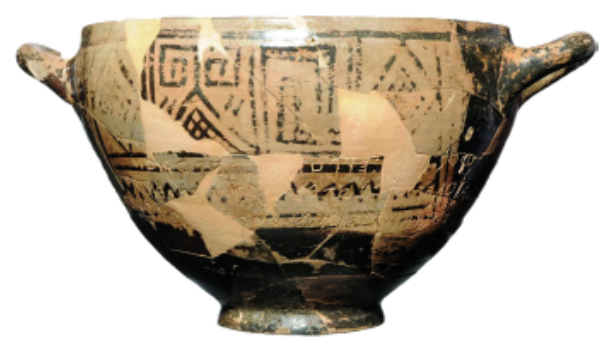Ancient History (Archaic Greece)
1/25
There's no tags or description
Looks like no tags are added yet.
Name | Mastery | Learn | Test | Matching | Spaced |
|---|
No study sessions yet.
26 Terms
What was the Phoenicians most important territory?
Carthage
Name three major characteristics of a Greek polis.
Single political authority which existed in an administrative center where officials with specific responsibilities governed the city
An agora, which initially was a meeting place where magistrates and citizens assembled when decisions were being made. Later this agora also took on the function of marketplace
A fortified hill where occupants could take refuge in times of danger, also known as an akropolis
Communal identity - politai
Clearly defined territory
Why, according to the textbook, is the most common translation of the concept polis – 'city state' – an imperfect one?
The most common translation of ‘polis’ to mean ‘city’ or ‘city’ state is imperfect because our modern imagination assigns certain characteristics to the word ‘city.’ In many cases, the poleis were quite small and did not have the features of a modern city. It also neglects the most important aspect of the polis - the people, or politai.
What were the characteristics of the Spartan constitution in antiquity? What were Sparta’s most significant political institutions?
Two kings, 28 elders
In the second half of the sixth century BCE, which measures taken by Pisistratus enabled him to win the support of the Athenian people?(Two points)
He staffed his bodyguard with members of the lower classes and elevated them to the status of hoplites, which had previously been unattainable for some of them
He instituted a system of travelling judges with meant that the common people were no longer exclusively at the mercy of noblemen in local disputes
What were some of Solons’ reforms?
In 594, Solon expanded the right to wield political power to a greater number of citizens by placing them into four classes based on wealth rather than birth. The citizens who produced the most bushels of grain (500 and 300 respectively) had access to the position of ‘archon.’
He also abolished debt bondage and the status of serfs.
What were some of Cleisthenes’ reforms?
He divided Attica in ten tribes or districts (phyle), which were further subdivived into 3 trittyes (thirds) and 140 demes (rural or urban districts). Fifty men from each phyle were chosen via the drawing of lots to sit on the council (Boule) of the five hundred
Who were the Sea Peoples and where did they come from?
The first significant “Sea Peoples” were the Shardinians/Shardan who likely came from Sardinia, this later grew to include other groups of people.
How do we know of their existence?
Ramses II wrote about them.
What were some of the main consequences of their actions?
The sea people began to work in Egypt spreading their culture.
Where did the Greek settle in the first wave of expansion?
The coast as near west to them as possible.
According to Antonaccio, what are the main push factors for Greek colonization in the Archaic period? (Three reasons)
- Population growth
- Land shortage
-Internal conflict
According to Antonaccio, what are the main pull factors for Greek colonization in the Archaic period? (Three reasons)
- trade prospects
- cultural prestige
- draw of citizenship
What are the three types of sources for the study of Greek colonization mentioned by Antonaccio?
Literary, mythological and archeological.
What is meant by ‘Hellenization’ in the article, in the context of the Archaic period?
Melding of Greek culture with non-Greek culture.

What is this?
Nestors’ cup
Why were so many Greek writings found in Pithecusae?
Because it was a known trade route.
Ostracism was introduced in the year?
508 BCE.
What is ostracism?
Exile of someone for ten years to stop them from getting too powerful.
When was tyrranos first used?
7th century BCE.
When did Homer write about?
1200 BCE.
What was a helot?
A Spartan unfree labourer thats land was taken and split amongst the spartans but they still had to care for the land.
When was the phalanx invented?
The archaic period.
What was the phalanx?
A battle manoeuvre with sheilds.
When did Ethne (ethnos) begin to form?
Archaic period.
What was an ethnos?
Nation/collection of small communities.